Apple $AAPL is up more than 4,300% since March 2003, the beginning of the bull market following the stock market bubble burst (post 9-11). The stock is up slightly more than 1,200% since I started covering it online (my blogger blog which pre-dates the blog you are reading).
I have owned APPL on multiple occasions over the past 6 years but I wish I could sit here and write to you that I was a holder the entire time (my gains are just a small slice of the longer term buy and hold pie) . I wasn’t a 1,200%+ gainer but I was in and out while taking profits on a yearly basis back in the mid to late 2000’s. Below is an example of yearly posts I made about Apple or as I called it “Green Apples” due to the fact that it was a cash register stock.
So, with all that praise and the massive gains, am I really turning bearish on the stock? Is Apple starting to turn sour? Well, not so fast but some minor red flags are starting to show up. Take a look at the charts below which highlight the lower highs and lower lows.
January 13, 2005: Green “APPLE”s
“Apple (AAPL) first showed up on my weekly screens on 10/24/04 at $47.41. Since this time, Apple has made the daily and weekly screens numerous times.”
January 17, 2006: All-Star Stock – Digesting Apple
“Apple has been on my screens for 15 months and has been in my portfolio on two separate occasions over those 15 months.”
January 10, 2007: Apple Inc. is Still Green
“What can I say; the apples keep getting greener!”
November 29, 2007: An iPod touch from Apple (AAPL)
“A new high and a move above $200 per share will be very bullish and a signal that this stock may have another run regardless of what the major indices do.”
Apple is still trading above the 200-d moving average and has not violated any long term trendlines so please do not short at this time. You may cash in shares and start to trim back your position by selling but I don’t advise going short just yet.
The ideal position to sell short is after a move below the 200-d ma when the stock tries to break back above but fails – that’s my sweet spot.
Goldman Sachs set a price target of $430 but I don’t listen to these “talking heads”. Another interesting fact: “Nasdaq OMX plans to announce a rare rebalancing of its Nasdaq-100 index, which will reduce the big weighting of Apple, which currently makes up more than 20% of the index.” – WSJ
As of today, April 11, 2011, I suggest cashing in some shares. A further drop and I suggest selling more shares. I wouldn’t even consider the word “short” until the stocks closes below the 200-d ma (trend trade of course – not day trading).
Let’s see if this decade long “Green Apple” turns into a “Sour Apple”.



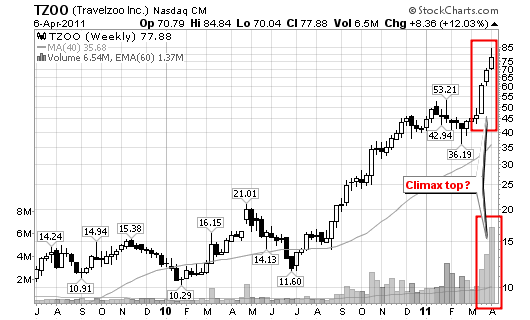

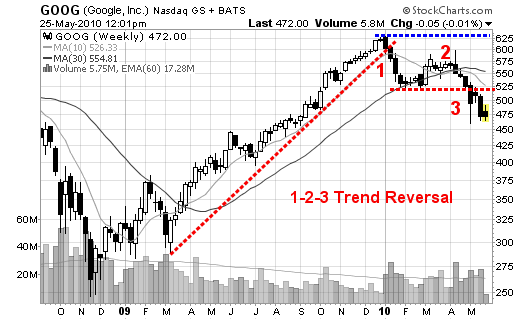
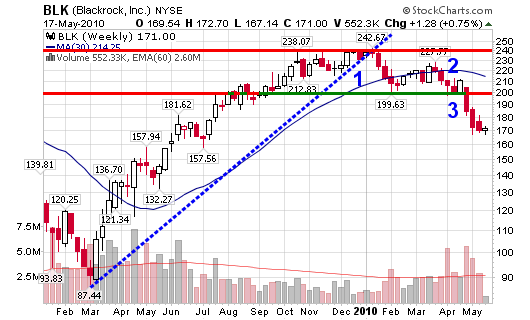
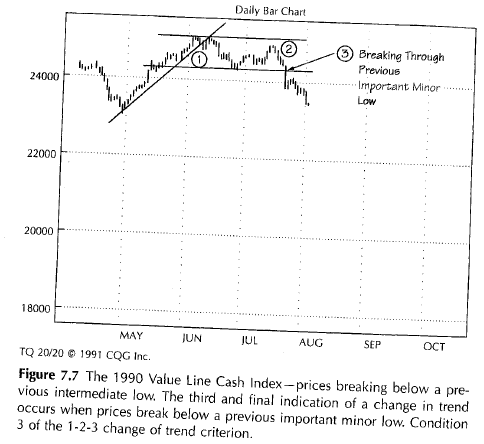
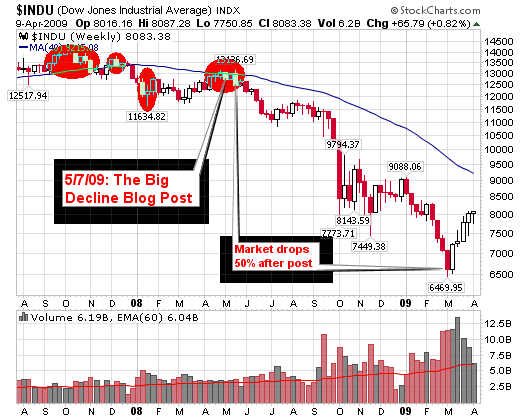

Connect with Me